
Creating an efficient learning environment that feels calm and easy to navigate so students can focus on learning is essential. Many teachers head into the start of a school year ready to welcome their students into a carefully-planned environment, but find themselves struggling to maintain that environment once the school year gets rolling. If this sounds familiar, then it is time to start leveraging the power of classroom jobs and interactive modeling.
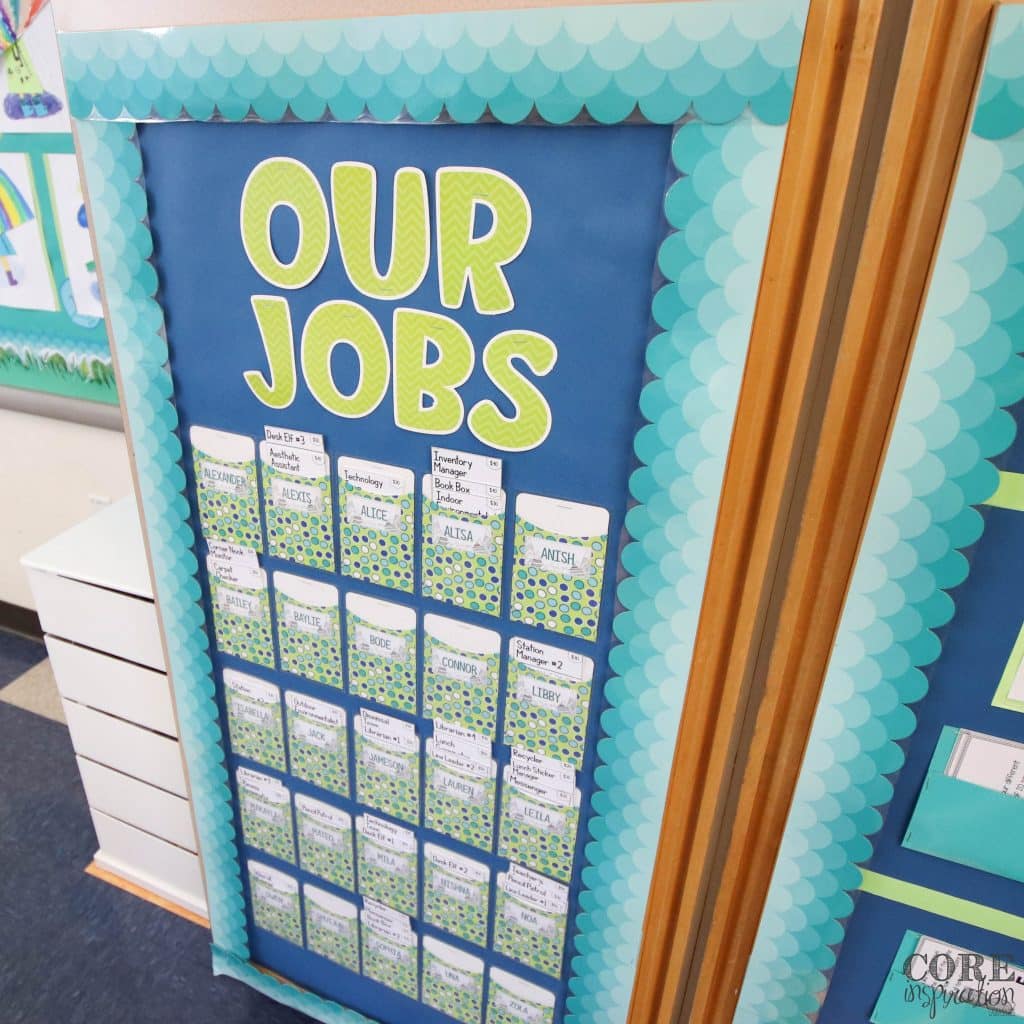
Classroom jobs are a fairly common classroom management tool, but they are not often used to their fullest potential. If you have class jobs but still regularly find yourself sitting in a disorganized or untidy classroom when your students head home, then it’s time to revamp the way you introduce those jobs by using interactive modeling.
Interactive modeling helps students understand the exact thinking and skills required for each job so they can contribute to maintaining an ideal learning environment. Truth be told, many elementary students have not yet learned some of the organization and tidy-up skills we assume they have. They may be trying their personal best to complete a class job, but it appears they’ve barely tried at all. Interactive modeling can eliminate this problem and transform your tidy-up time into a session that leaves your classroom glowingly ready for a fresh day of learning before your students head out the door.

The interactive modeling approach I like to use in my elementary classroom is as follows:
When students are carefully shown what the expectations are, and how to meet them, they become immensely capable of meeting those expectations. This process makes that possible.
If you are looking for an additional layer of dedication to your classroom jobs, then you may also want to incorporate job applications. This makes each job feel even more official and gives students time to think about why they are interested in a specific job.
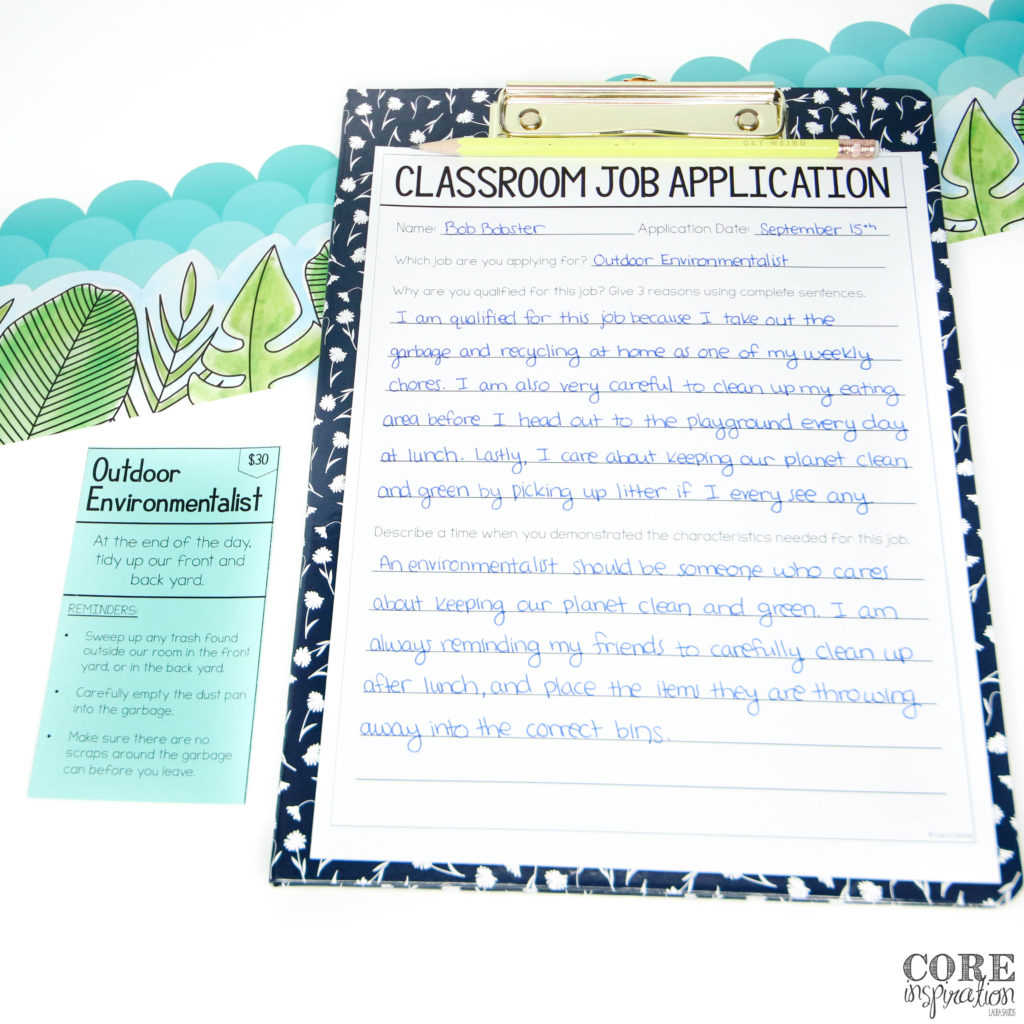
In my classroom, I have a drawer where students can grab an application at any time. Applications can be completed at home, after students complete their bellwork, or anytime we have class shop. Job cards for any jobs which need applicants hang on our whiteboard next to our schedule so students can read the expectations for the job as they complete their application. The process of completing an application is another skill I introduce through interactive modeling.
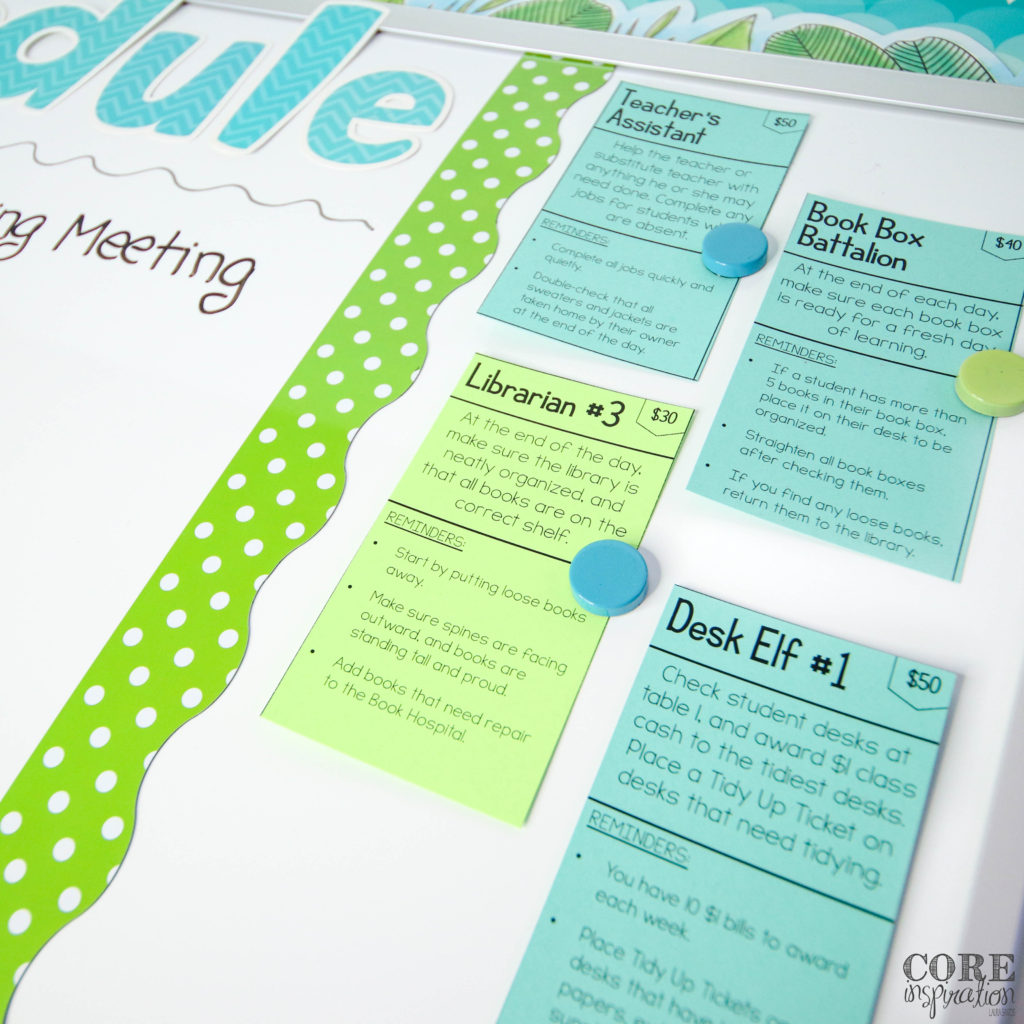
Once an application is submitted, I quickly read it to check for completeness. If the application is detailed, then I add the student’s name to my application tracker and send the application home in the student’s weekly work folder so his/her parents/guardians can see it. If the application is lacking, I return it to the student and ask them to reread the job card, add more detail to their application, and resubmit it when ready.
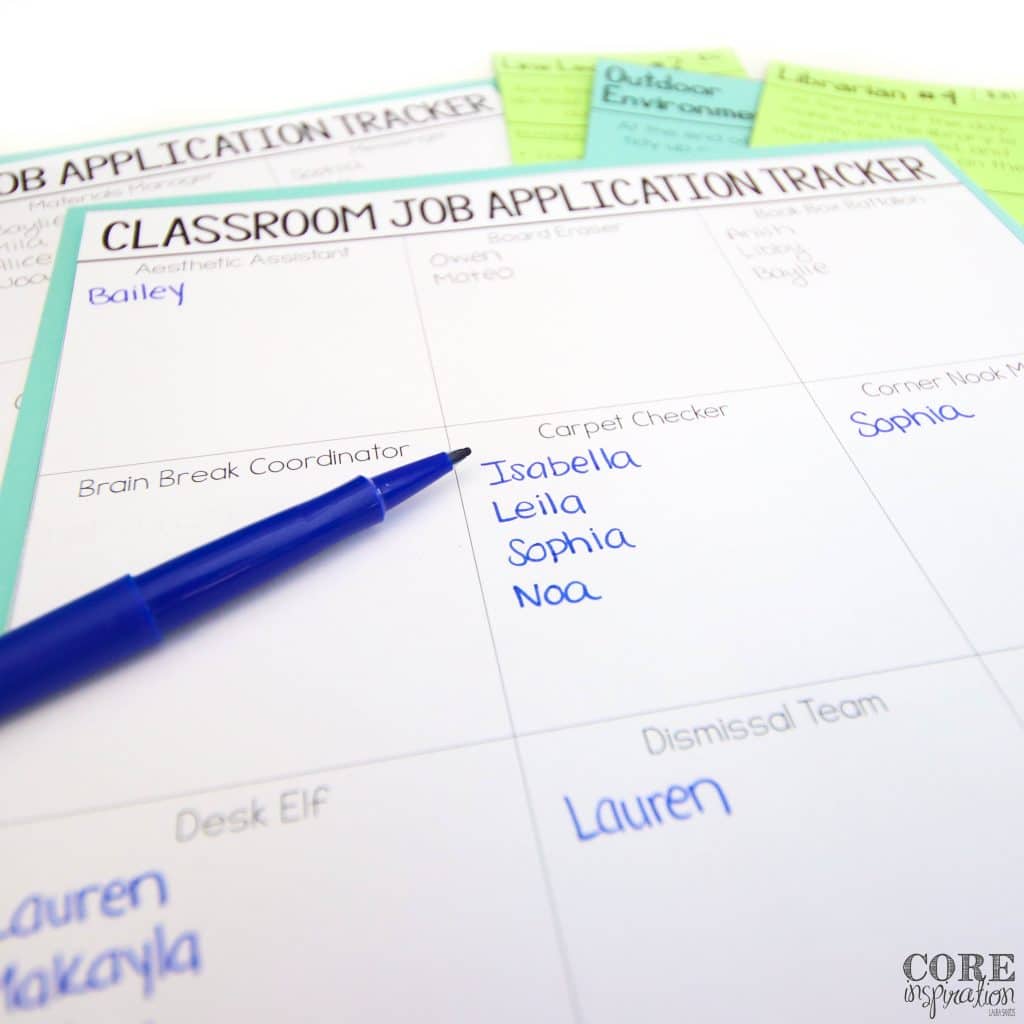
The combination of interactive modeling and job applications has resulted in a classroom job system I can count on. Gone are the days when my students head out the door, and I am left feeling frustrated by the mess that’s left behind. This results in more time and mental space for planning and prepping for the next day of learning and helps everyone take ownership of the space we share each day.
If you are interested in giving interactive modeling a try, you can save tons of time by using my free Editable Classroom Job Cards. The job applications I use are part of my Classroom Economy Toolkit, which you can read exactly how I implement in this post.
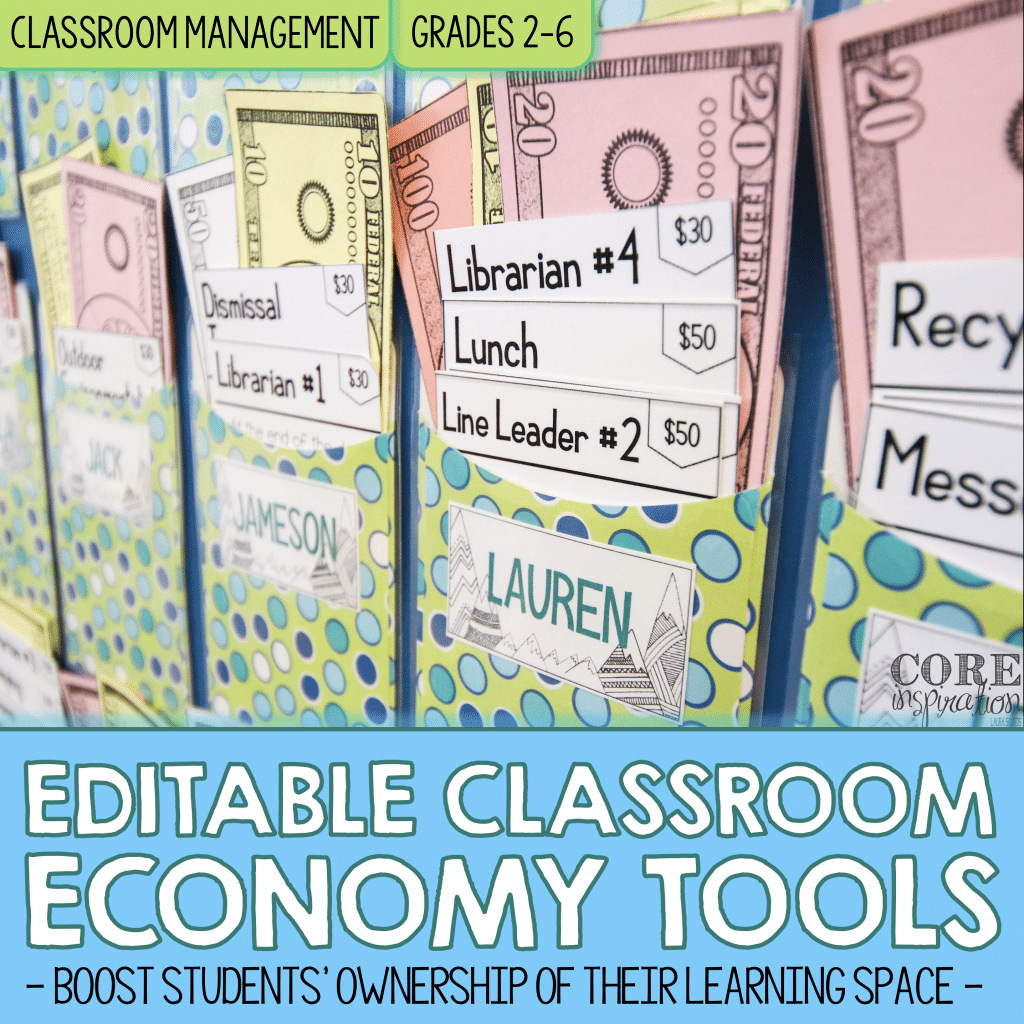
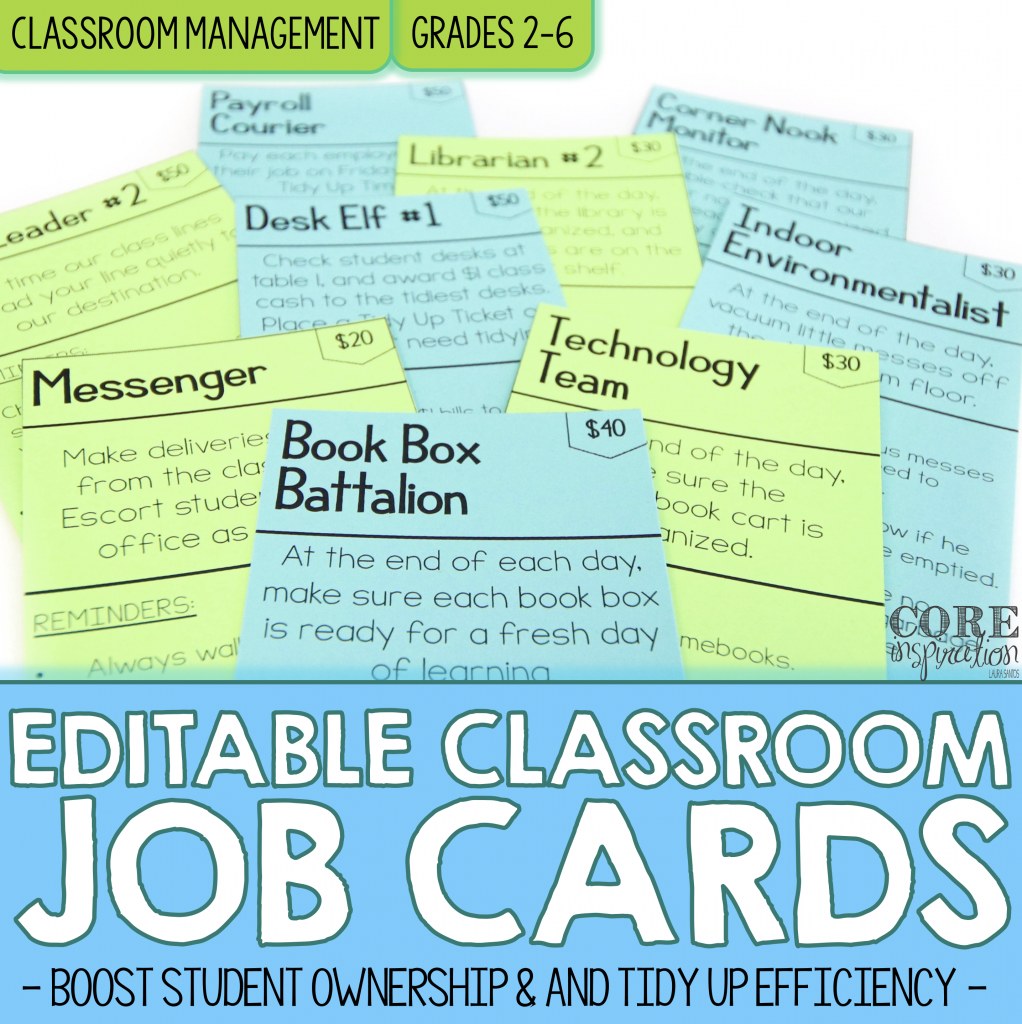
These are the tools I mentioned in this post that will save you time as you begin to implement this process. This list includes affiliate links for which I may make a small commission at no extra cost to you should you make a purchase.
If you have any follow up questions about how I introduce classroom jobs, please comment below.
This post contains Amazon Affiliate links to make it easier for you find the supplies shared in this post. To see all my favorite Amazon finds, visit my Amazon Influencer page here.

I’ve been an elementary teacher for ten years, and love sharing tips and resources that make differentiated learning more manageable for you. Thank you for visiting.
Learn More
Dropping by with weekly tips, classroom strategies, and free content created with you in mind.
Join me and other 2nd through 4th grade educators in the Teaching with Core Inspiration Facebook Group. This is a place to collaborate, ask questions, and learn how teachers like you are using Core Inspiration resources in their classrooms. Hope to see you there!
© 2024 Core Inspiration ∙ Website by KristenDoyle.co
4 Responses
I have a question about preparing your classroom job. When you laminate your library pockets. How do you get it from not peeling apart?
Hi Ally, I open my scissors and cut right along the edge of the opening….I haven’t run into any peeling so far. They usually hold up for a whole year. 🙂
How often do you switch classroom jobs? Does anyone ever get fired from a classroom job if they refuse to do it?
Hi Michele, I rotate most of the jobs on a weekly basis. If it’s a job someone has applied for, I rotated it every other week or even monthly. I haven’t yet encountered any students refusing to do a class job – I have had some that aren’t doing it or have trouble doing it well so I just meet with them quickly and it’s always been due to confusion about what they’re supposed to do. In this case, we read the job cad together and I help them understand the steps they’ll be taking or even help them with the job for a couple of days until they feel more confident. If I did have a student refuse, they would lose the job and likely be given a break from any classroom jobs for a period of time. The natural consequence of not getting paid a salary and not being able to participate in the class shop day would likely help motivate in this case.